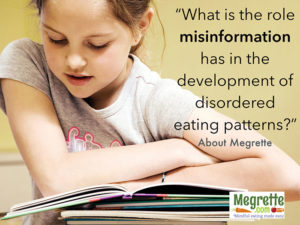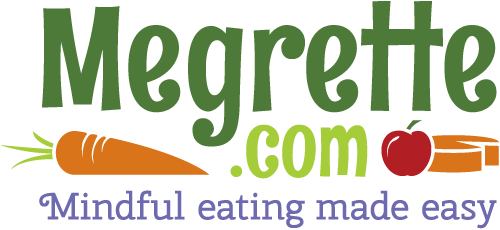
When professionals drop the weight loss requirement and shift the counseling to engage in health promoting behaviors such as eating when hungry, eating nutrient rich foods, eating satisfying amounts, and moving the body in a regular, consistent, and enjoyable way, the conflict between health and the Thin Ideal vanish. Many professionals are not sure why this conflict disappears. My experience with both mindfulness and research continues to point me to one answer – it is how judgment (which often presents as an invisible bias) changes the counseling interaction for both the dietitian and the client.
Really? Here is a counseling video from Motivational Interviewing for Nutrition and Health Professionals demonstrating how being present resolves the conflict. In my course, Core Concept of Mindful Eating: LIVE I explore this in more depth. However, if you are looking for and excellent book on MI, Dawn Clifford, RD PhD and Laura Curitis MS, RD book, Motivational Interviewing for Nutrition and Health Professionals offers many great counseling scripts, while providing a clear understanding of non-dieting and Mindful Eating throughout the book.
I am not a naturally nonjudgmental person. I am human and this means I have preferences. In the book, The Core Concepts of Mindful Eating: Professional Edition, I explain, sometimes we try to judge our feelings. This creates a lot of problems because, “Life is not always pleasant, and eating experiences will not all be pleasant. This is because not all feelings are pleasant.”
These unpleasant experiences are often judged or labeled as “bad.” Yet, your feelings aren’t “good or bad” they simply exist, nonjudgmentally.
In the book, I offer you an analogy to help you explain this concept. “Imagine a box of crayons with 64 colors. Some colors you love, some you dislike, and there are some you don’t even think about — for example, tan and black. Feelings are a lot like this box of crayons. Some feelings are hard to be present with because you don’t like them. Some are easy because you enjoy them, and there are some you don’t think about.”
Many clients think easy to tolerate feelings are “good” because they take less effort to be with. Yet, only having “good” feelings is very limiting. “Having the ability to tolerate different feelings means you can choose any color in the box of 64 crayons. If you can tolerate only one type of feeling, say only the “green” feelings, then you now can’t tolerate the experience of reds, yellows, blues, purples, grays, tans, or any of those funny-named colors like Twilight Tangerine. The ability to tolerate a wide spectrum of feelings makes life colorful, rich, complex, and interesting.”
In my next post, I will be shifting gears and will explore a whole new topic, How to move from the present moment to the planning phase. I hope you will join me! You can also sign up for my newsletter, Oh, That Will Work! or maybe take a dip in the self-care pool and sign up for The Mindful Eating Day celebration on January 25, 2018. This “day” is really a month-long opportunity to build a mindfulness practice, and experience first-hand what self-care is all about. To learn more, visit The Center for Mindful Eating.org.
How do we, as nutrition professionals, model for our clients the ability to hold all these feelings? It takes practice, training, and support. Many dietitians have not made the connection that what we eat creates an emotional connection. “The ability to experience the feelings of eating a variety of foods, tastes, and flavors makes eating interesting, rich, complex, and nutritious!” And to get to the place of experiencing a wide array of feelings begins by accepting ALL feelings, all foods, all body types, all sizes, nonjudgmentally!
By Megrette Fletcher M.Ed., RD, CDE
Author of Core Concepts of Mindful Eating: Professional Edition

